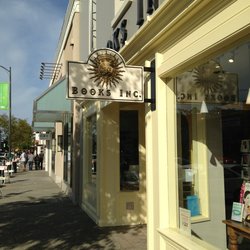Alexandra Alter reports for the New York Times that a surprising thing has happened in the book business over the last couple of years (although perhaps not so surprising to longtime readers and booksellers): the sharp rise in ebook sales generated by early Kindle excitement has leveled off, and readers are returning to print.
Alter interviewed Steve Bercu, owner of BookPeople in Austin, TX, who credits his store’s profitable 2015, in part, to
the stabilization of print and new practices in the publishing industry, such as Penguin Random House’s so-called rapid replenishment program to restock books quickly…Penguin Random House has invested nearly $100 million in expanding and updating its warehouses and speeding up distribution of its books.
I’m thrilled that my longtime publisher is taking the lead on this. People say, “Oh, the Big 5 publishers never change,” and I constantly hear complaints that the New York publishing houses have their heads in the sand. But it sounds as though things are changing, and the publishers are finding ways to make print books more appealing–which is good for readers, good for authors, good for bookstores, and good for communities.
I’m fortunate to live in the Bay Area, home of dozens of thriving independent bookstores. At Kepler’s 60th anniversary party last week, lines were out the door. Green Apple, a mainstay of the Richmond district in San Francisco, opened a new branch on the other side of Golden Gate Park a couple of years ago, and it’s thriving. So too are Books Inc., The Booksmith, and many other bookstores in San Francisco, Marin, the East Bay, and Silicon Valley. Southern California has some fantastic indies too. On my Golden State book tour last year, I had the chance to read at Warwick’s, an amazing independent bookstore with a strong community following in LaJolla, as well as LA’s Vroman’s. And in the past, I’ve had the pleasure of reading at West Hollywood’s famous neighborhood store, Book Soup.
And it’s not just the Golden State where independent bookstores are going strong. The article notes: “The American Booksellers Association counted 1,712 member stores in 2,227 locations in 2015, up from 1,410 in 1,660 locations five years ago.”
I’m sure there are plenty of reasons behind the shift, but I have an inkling that one contributing factor may be a more even-keeled approach to e-book pricing. When publishers have control over the price of e-books, it levels the playing field for print books and, as a result, for brick and mortar stores. My books often cost the same in paperback as they do in e-book format. As a reader, given a choice between print and digital when the cost is the same, I’ll always choose print. E-books may still be very appealing in contrast to hardcovers, which often cost twice as much, but once a book comes out in paperback, the e-book has no real advantage unless you’re a traveler who doesn’t want the weight of books in your luggage or a minimalist who doesn’t want the bulk of books in your living space.
And while the chains may have trouble competing with Amazon, local independent bookstores offer readers, authors, and communities something that Amazon never can. I think that’s why they do so well. Go into Books Inc. Burlingame during holiday season, Mother’s Day, Father’s Day, etc., and you’ll see people lining up to have their purchases gift-wrapped. On any afternoon after school, you’ll find kids reading on the bench seat in the children’s section. Earl, the manager, and all of the employees, will put just the right book in your hand if you’re not sure what your looking for.
Amazon can’t give you that experience, but neither can Barnes and Noble–which may be why smaller bookstores seem to be faring better than the chains. Nor can they mimic the experience of walking into Kepler’s and being greeted by the co-owner, Praveen Madden, who is always excited about something he’s reading and will tell you why. Nor can it rival, for an author, the joy of finding all of my books lined up, signed, on a shelf at Green Apple, with handwritten shelf talkers. (Below, the store’s owners: Kevin Hunsager, Kevin Ryan, and Pete Mulvihill).


That’s why I bristle at the idea that independent bookstores are quaint entities we need to “save.” They are vital, and they are strong businesses with sound business models: small spaces filled with the kind of books people want to read, staffed by avid readers who also happen to be great salespeople. Independent bookstores tend to be located in community centers. Books Inc., for example, has eight small but incredibly well-stocked and well-curated stores scattered throughout the Bay Area, all located in the middle of communities that have a lot of readers. Green Apple is in the heart of the inner Richmond, near neighborhood markets and restaurants. The Booksmith is in the heart of Haight Street, a neighborhood with constant foot traffic. And what serious reader in San Francisco can resist a trip to City Lights in North Beach? The fact is, ordering books from Amazon is no more convenient than purchasing from my neighborhood store, which is a five-minute drive from my house, gives me “same-day service” without the prime membership price tag, and pumps money back into my community.
I’ve got nothing against e-books, really. But, as my 10-year-old, child of digital everything, consumer of all things electronic except electronic books, says, “I like real books a million times better.”
Read Alter’s article, “The Plot Twist: E-Book Sales Slip and Print is Far From Dead.”
photo of Books Inc. courtesy of Yelp
